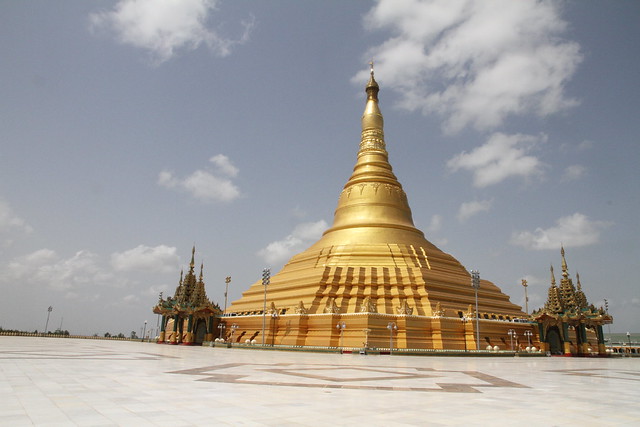By Niruban Balachandran
In a controversial visit by a Burmese delegation to China, President Thein Sein recently announced that Naypyidaw fully supports Beijing’s contention that it owns most of the South China Sea (to which at least six other Asian states have historically laid claim). Separately, recent speeches by both U.S. Senator John McCain and German Chancellor Angela Merkel have pointed out Naypyidaw’s failure to improve its abysmal human-rights record, despite its membership in ASEAN since 1997. At first glance, it seems that ASEAN’s influence over Naypyidaw is minimal at best, and that Myanmar has been grossly disloyal to its nine Southeast Asian partners.
However, the New York Times published a remarkable story last week about a recent maritime confrontation between the United States, Myanma,r and North Korea, which illustrates the far reach of ASEAN’s political clout with Naypyidaw. Specifically, it attests to the diplomatic influence of ASEAN on Myanmar. With the support of American and ASEAN leaders, a North Korean cargo ship suspected of carrying missiles or other weapons to Myanmar was intercepted last month by the destroyer USS McCampbell. The North Korean ship was asked to turn back, in compliance with an international embargo on arms trade with Naypyidaw.
On May 26, the McCampbell caught up with the North Korean ship and requested to board it, under the authority given to it by Belize (under which the ship was flagged) and United Nations sanctions. The North Koreans refused four times. What happened next is a tribute to the power of ASEAN diplomacy in exerting influence on Myanmar to persuade the North Korean ship to turn back:
By happenstance, a group of senior officials from the Association of Southeast Asian Nations — including a representative from Myanmar — was in Washington while the slow-speed chase was occurring 8,000 miles away. On May 27, when the group visited the Old Executive Office Building opposite the White House, Gary Samore, the president’s top nuclear adviser, addressed the officials, urging Vietnam, Thailand, Indonesia and Malaysia to fully join the nonproliferation effort.
He then surprised the Asian officials by telling them he had a “sensitive subject” to raise, and described the American suspicions, providing the group with a picture of the ship on its way to Burma …The message apparently got across. A few days later, long before approaching Burma, the cargo ship stopped dead in the water. Then it turned back to its home port, tracked by American surveillance planes and satellites, and suffering engine trouble along the way.
Arguably, had it not been for ASEAN, the confrontation might have escalated into an international conflict between Washington and Pyongyang. The incident provides an interesting peek into the deeper relationship between ASEAN and Naypyidaw.
The probability that Myanmar’s repressive political system would have reformed without its admission to ASEAN in 1997 is up for debate. Engagement and dialogue have borne very little diplomatic fruit. In 2007, the military cracked down on dozens of Buddhist monks who were marching in support of human rights, and the winner of the last elections in 1990, Aung San Suu Kyi, was only freed from her imprisonment after the military junta rigged last November’s elections in its favor. To the dismay of many nations, ASEAN tentatively agreed to allow Myanmar to chair the grouping in 2014 without any concrete promises of reform. On the ground, the Burmese people’s opinions of their country’s progress on liberty and quality of life are very much mixed.
Yet ASEAN has had a proven track record of strategically influencing Myanmar on key sociopolitical issues, including the grouping’s insistence that Myanmar accept international humanitarian assistance in the aftermath of Cyclone Nargis in 2008, which killed hundreds of thousands and left 2.5 million Burmese displaced in the Irrawaddy Delta for two weeks without aid.
Arguably, the aftermath of this natural disaster would have killed far more people without the intervention of ASEAN. When the Myanmar’s military junta would not allow emergency aid from the UN and other agencies to enter the country, it was the 2008 chairman of ASEAN, Singapore’s Foreign Minister George Yeo, who exerted the bloc’s collective pressure on the military junta and led the relief efforts in providing much-needed emergency food, medicine, and other supplies to the country’s displaced and dying population. The deadlock between Myanmar’s military junta and the international nongovernmental organizations would have been much more difficult to surmount without the trust, however reluctant, that the regime eventually placed in ASEAN.
These examples are illustrative of the far more nuanced relationship between ASEAN and Naypyidaw, which must continue to be developed and nurtured if ASEAN wants to achieve its objective of creating a more integrated community by 2015.
Niruban Balachandran is Executive Director of TeamBuilders International Ltd.


1 comment for “Myanmar’s Delicate Dance with ASEAN”